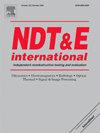使用可解释的深度卷积神经网络对声发射信号进行物理解释和分类
IF 4.5
2区 材料科学
Q1 MATERIALS SCIENCE, CHARACTERIZATION & TESTING
引用次数: 0
摘要
模型可解释性仍然是声发射信号表征中深度学习应用的一个关键挑战,限制了它们在结构健康监测中的可靠性。该方法将可解释的卷积神经网络与物理信息分割相结合,以提高分类精度和可解释性。通过基于基本Lamb波模式(S0和A0)的理论到达时间对信号进行分割,并采用类激活映射(CAM),梯度加权CAM (Grad-CAM)和维度智能CAM (DCAM),我们对模型的决策过程提供了定量的见解。使用200个来自铅笔断裂测试的声发射信号,我们的模型识别出不同事件的不同特征。可视化显示该模型专注于S0-A0过渡和后a0区域,DCAM突出了S0-A0过渡区域对最近测试点的重要性。在本文中,我们通过提供定量的、基于物理的直觉,将模型输出与特定的声发射信号片段和潜在的物理过程(如Lamb波模式相互作用和色散)相关联,解决了深度学习的“黑箱”性质。通过弥合深度学习性能和人类可解释的见解之间的差距,我们的方法提高了基于ae的结构健康监测的可靠性。本文章由计算机程序翻译,如有差异,请以英文原文为准。
Physics-informed interpretation and classification of acoustic emission signals using explainable deep convolutional neural networks
Model interpretability remains a critical challenge for deep learning applications in Acoustic Emission (AE) signal characterization, limiting their trustworthiness in structural health monitoring. The proposed approach integrates explainable Convolutional Neural Network with physics-informed segmentation to enhance both classification accuracy and interpretability. By segmenting signals based on the theoretical arrival times of fundamental Lamb wave modes ( and ), and employing Class Activation Mapping (CAM), Gradient-weighted CAM (Grad-CAM), and Dimension-wise CAM (DCAM), we provide quantitative insights into the model's decision-making process. Using 200 AE signals from pencil break tests, our model identifies distinct features for different events. Visualizations show the model focuses on - transition and post-A0 regions, with DCAM highlighting significant importance in the - transition region for the closest test point. In this paper, we address the 'black box' nature of deep learning by offering quantitative, physics-based intuition, correlating model outputs to specific AE signal segments and underlying physical processes such as Lamb wave mode interactions and dispersion. By bridging the gap between deep learning performance and human-interpretable insights, our method enhances the reliability of AE-based structural health monitoring.
求助全文
通过发布文献求助,成功后即可免费获取论文全文。
去求助
来源期刊

Ndt & E International
工程技术-材料科学:表征与测试
CiteScore
7.20
自引率
9.50%
发文量
121
审稿时长
55 days
期刊介绍:
NDT&E international publishes peer-reviewed results of original research and development in all categories of the fields of nondestructive testing and evaluation including ultrasonics, electromagnetics, radiography, optical and thermal methods. In addition to traditional NDE topics, the emerging technology area of inspection of civil structures and materials is also emphasized. The journal publishes original papers on research and development of new inspection techniques and methods, as well as on novel and innovative applications of established methods. Papers on NDE sensors and their applications both for inspection and process control, as well as papers describing novel NDE systems for structural health monitoring and their performance in industrial settings are also considered. Other regular features include international news, new equipment and a calendar of forthcoming worldwide meetings. This journal is listed in Current Contents.
 求助内容:
求助内容: 应助结果提醒方式:
应助结果提醒方式:


